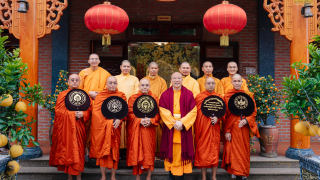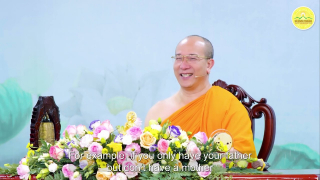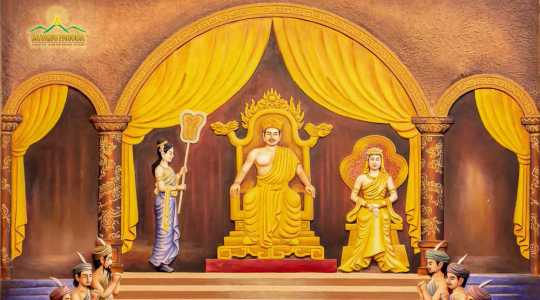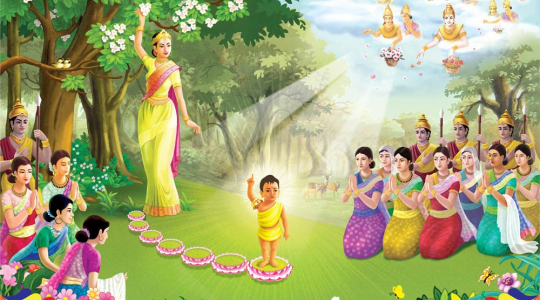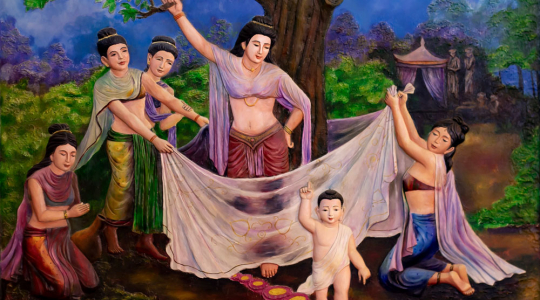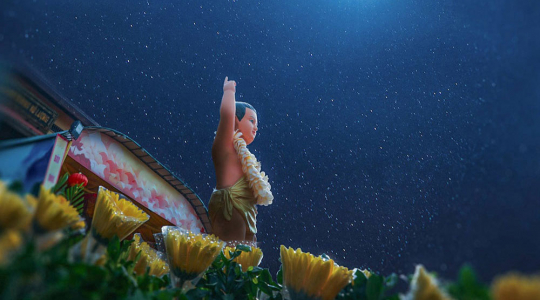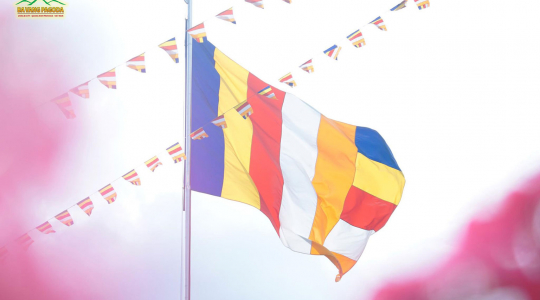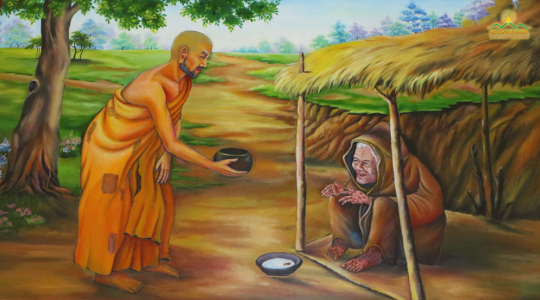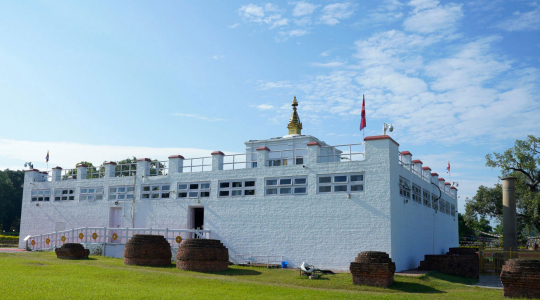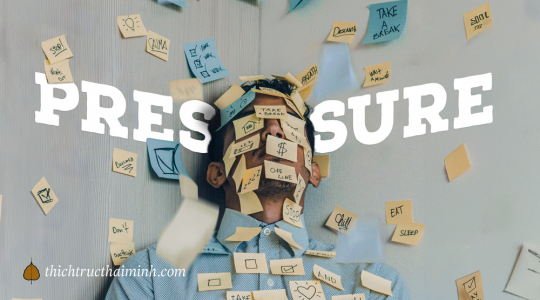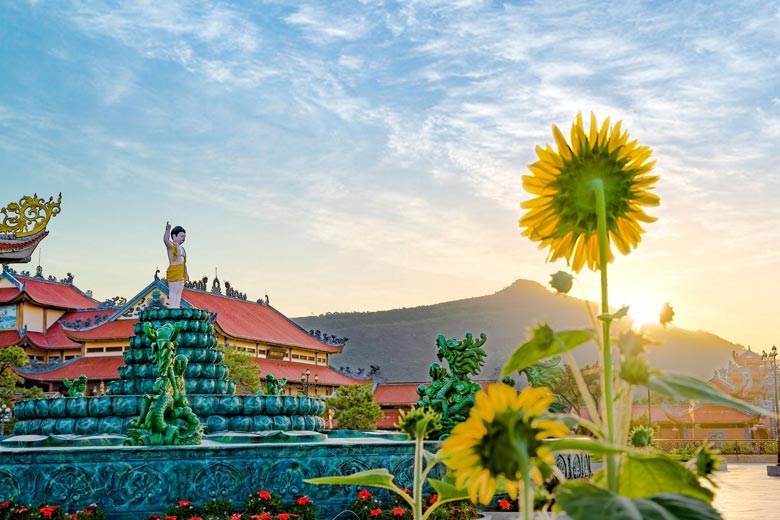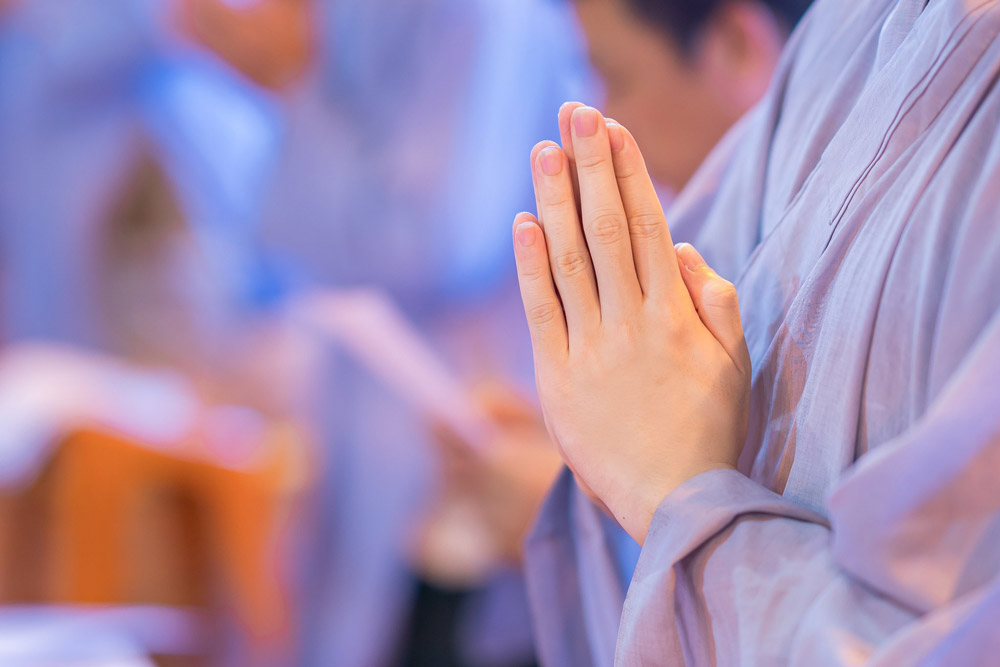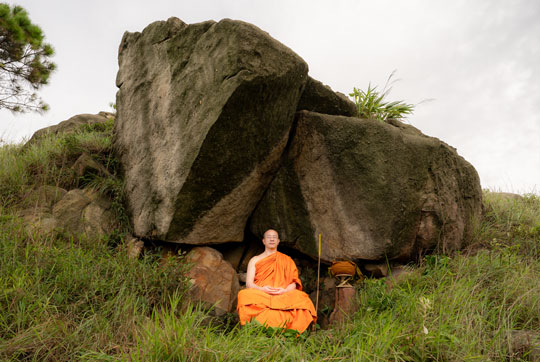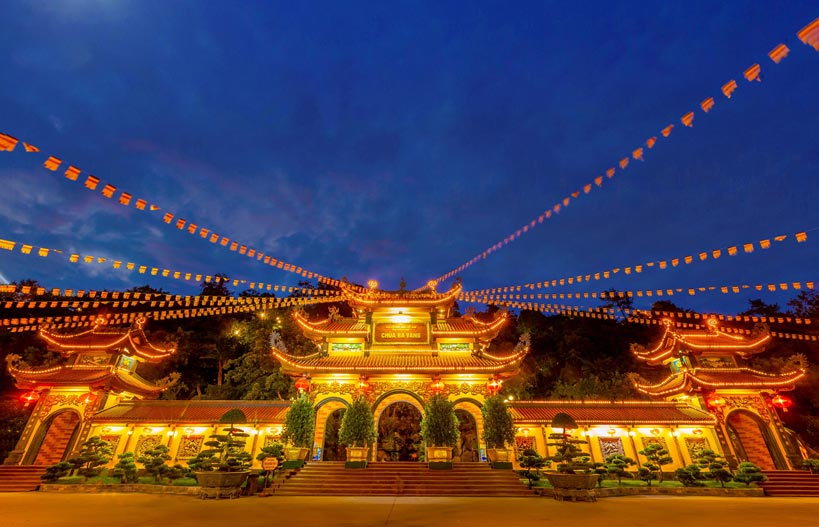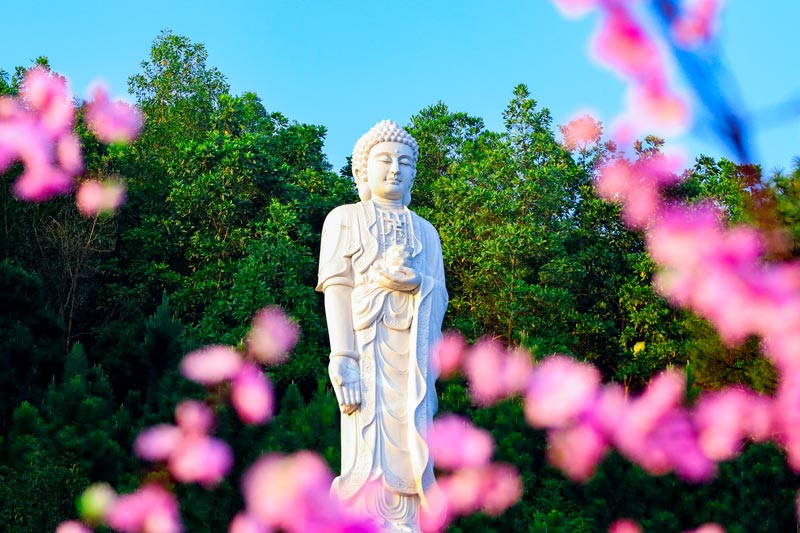Who is the Buddha? Was he a real person?
Table of contents [Hide]
More than 2,600 years ago, a special person appeared in this world in Ancient India. He was Prince Siddhartha, who later became Shakyamuni Buddha. He was a king's son, living in wealth and privilege, but later chose to give up his wealth and upper status to become a monk. He eventually became a Great Spiritual Teacher, guiding all beings toward absolute happiness.
1. What does “Buddha” mean?
The word “Buddha” means “an enlightened being.” A Buddha is an enlightened person who is fully clear-sighted about the origin and cause of everything in the universe.
He sees through where this earth and humans come from; why people have to become old, sick, and dead; why they can not be young forever; whether death is the end or not; and where they will go after death, etc.
His merit and virtue also reached perfection. The Buddha loved and saved all sentient beings; he became enlightened by himself, then taught and instructed others to achieve enlightenment.
That specialty has made people wonder if the Buddha really exists or if it is just a legend created by Buddhist devotees.
2. Who is the Buddha? Was he a real person?
The Buddha referred to in history is Shakyamuni Buddha. He is an actual historical figure; in other words, he was also a human being like us, who had a family and hometown. Today, in India, there still exist relics of where the Buddha was born, attained enlightenment, preached the Dharma and entered Nirvana, etc.
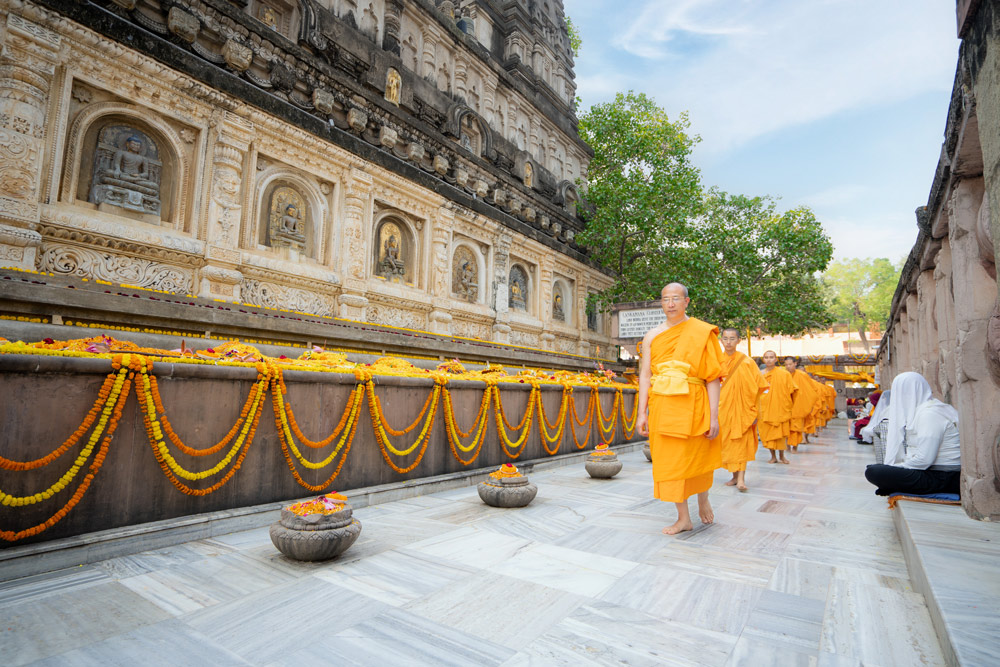
Mahabodhi Temple at Bodh Gaya, India, where Prince Siddhartha attained enlightenment, is evidence of the appearance of the Buddha in the world. Whoever goes on a pilgrimage to the “Land of the Buddha” couldn't miss visiting this place.
Buddhist scriptures say that Shakyamuni Buddha, or Prince Siddhartha, was born into a royal family. His father was King Suddhodana, and his mother was Queen Maya, who ruled a kingdom of the Shakya clan named Kapilavastu. He had a very unique and beautiful appearance, which was considered to be full signs of a great person.
Most fortune tellers forecasted that the Prince would grow up into a brilliant King and rule the world; however, others forecasted that he would leave the palace to become an ascetic when growing up, and then attain Buddhahood. The latter made King Suddhodana, his father, worried and afraid what the hermit seer predicted would become true.
Thus, he planned to let the Prince enjoy all the worldly pleasures to prevent his intent to become a monk later. In particular, the King ordered that all the old, sick, and dead were not allowed to stay in the kingdom so that the Prince would not see any suffering.
Then, he grew up in the love of the King and Queen as well as all citizens and lived in fabulous wealth without knowing anything outside the palace.
>>> Read more: Early life of Prince Siddhartha Gautama - Life of Budda: Part 1
Despite living a life of luxury full of pleasure, the Prince wanted to go out of the palace through its four gates to explore normal life. Then he sneaked out of the palace and encountered those four scenes: old age, sickness, death, and an ascetic monk. When he got home, the Prince was so thoughtful and asked his father (King Suddhodana):
“How can I not be old?”
“How can I not be sick and dead?”
“Is there any way to help not only me but everyone, all beings end suffering?”
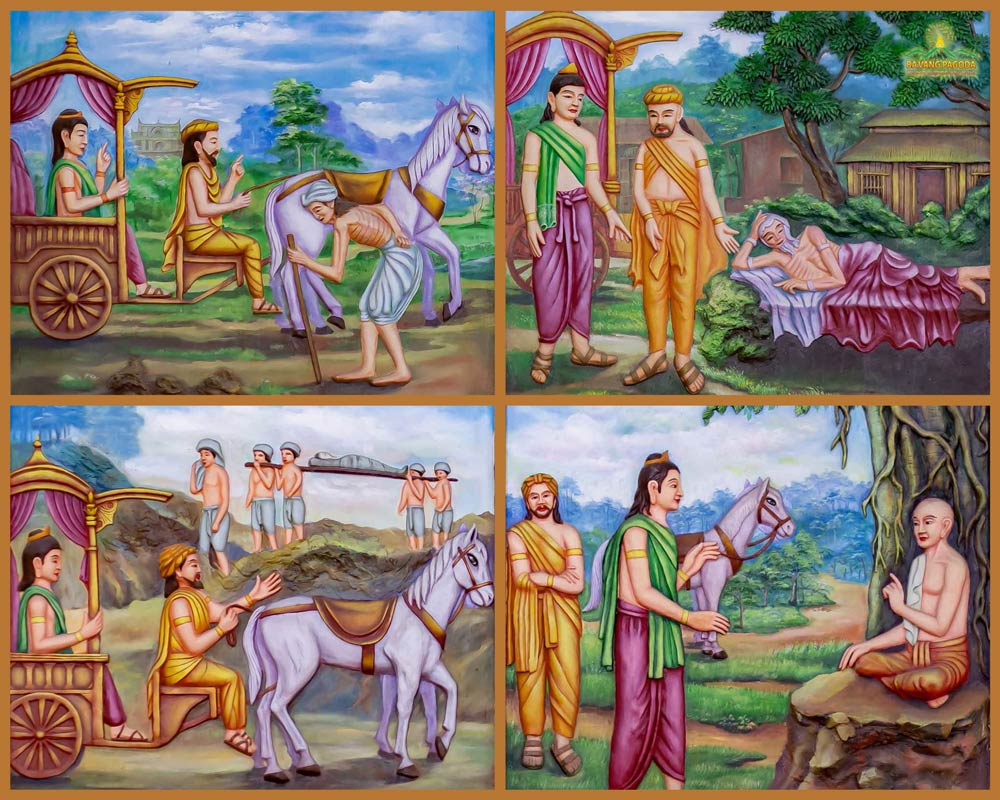
Four scenes that inspired Prince Siddhartha to become a monk
>>> Read more: Four sights motivated Prince Siddhartha to be an ascetic - Life of Buddha: Part 2
The King could not answer these questions, then Prince Siddhartha told his father that if he couldn't give him the answers, he would go for them, finding the answers to those questions.
When the Prince was 19, his wife, Yasodhara gave birth to a son, which made it so hard on him. He knew that having a baby even tied him down harder and he couldn't go and be free to solve all his questions and find ways to rescue all beings.
Until the second of the eighth lunar month, after a big banquet in the palace, the Prince decided to leave his family. He rode a horse to depart from his palace and become an ascetic.
After 5 years of learning to seek enlightenment and 6 years of observing extreme asceticism, he tortured his body in many ways. Some days, he didn't eat anything but only one bean, sesame, or peanut. From a strong young man, the Prince at that time was only skin and bone; his body was drained. Although he had tortured his body to that extent, he did not find answers to his questions. Thus, he found the Middle Way, returning to live a balanced life and eat to have the strength to keep on the spiritual practice.
Afterward, Prince Siddhartha meditated under a Bodhi tree to meditate and vowed: “Though only my skin, sinews, and bones remain, and my blood and flesh dry up and wither away, yet will I never stir from this seat until I have attained full enlightenment.”
After 49 days and nights of continuous meditation, when his mind was completely calm and free from all afflictions, he became clear-sighted and comprehended everything in this universe. He successively attained three insights: seeing and remembering clearly his past lives, seeing clearly the birth and death of sentient beings in countless past and future lives, and finally, eradicating all defilements and dullness in his mind that made him reborn again.
The questions before his renouncing to become a monk were completely clear at that time.
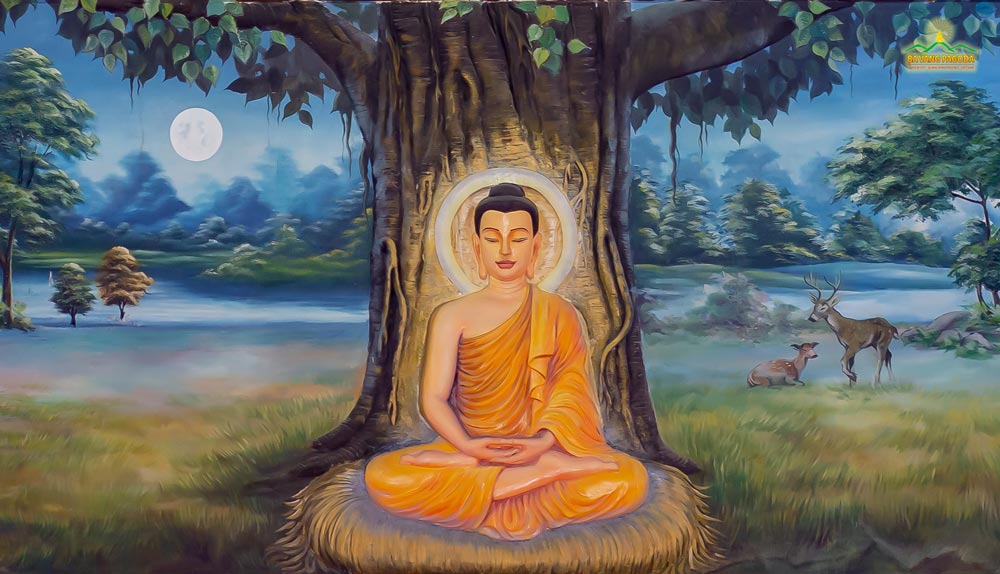
After 49 days and nights of meditating under the Bodhi tree without leaving, the Prince attained Buddhahood.
The Buddha then embarked on a long 49-year journey to propagate the Dharma and illuminate the truth for sentient beings. At the age of 80, he entered Nirvana (passed away) in a Sala forest. After being cremated, his body turned into relics. These relics were distributed among countries and preserved until today. This is also exact evidence of the Buddha's real appearance in this world.
3. What did the Buddha teach?
With his perfect wisdom of enlightenment, the Buddha saw that every sentient being could achieve the supreme wisdom and ultimate happiness that he did.
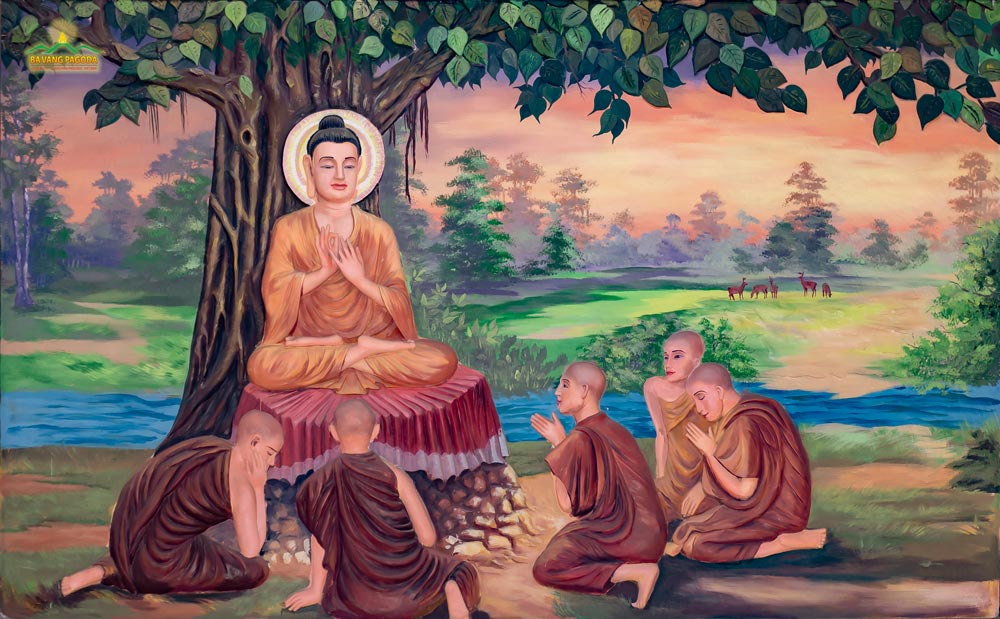
After attaining enlightenment, the Buddha first preached the Four Noble Truths to Annata Kondanna and his four brothers.
As all sentient beings seek happiness, the Buddha taught us how to achieve this goal, starting with the Dhammacakkappavattana Sutra - Setting the Wheel of Dharma in Motion Sutra. In this Sutra, the Buddha preached the four truths of life, or the Four Noble Truths, which was considered as a fundamental doctrine running through Buddhism.
3.1. The truth of suffering
The Buddha first pointed out the truth of suffering. He affirmed that life is suffering and mentioned eight sufferings in the life of every sentient being, including birth, old age, sickness, death, parting from loved ones, unfulfilled desires, being close to the ones we don't like, and finally, the suffering of the five aggregates.
To be born in this life is inherently suffering, from an arduous 9-month pregnancy to painful childbirth; sometimes, the door of life can become the door of death. Many cases of childbirth result in the death of both the mother and the child. That is suffering!
Old age also brings suffering to sentient beings. When we are old, we will be inferior in every aspect. Our intelligence declines, our eyes are blurred, our ears are deaf, our legs and knees are faltering, our backs are bent, etc. Those are signs of old age that nobody wants to have.
The next suffering is the illness. We are really scared of and do not want to get sick because it causes immense suffering. However, it still comes to all of us that we can not avoid.
The same goes for death. No one wants to die because people think death means the end of life, letting go of everything and vaguely knowing where they will go next. That is the reason why people are scared of death.
The Buddha also mentioned four more sufferings: the suffering of being apart from loved ones, the suffering of being close to the ones we don't like, the suffering of unfulfilled desires, and finally, the suffering of five aggregates. It means we all have a lot of desires that are burning inside each of us. If they are not satisfied, they will make us suffer.
All these things are not what we desire, but they still come to us without avoidance. Our happiness temporarily comes to us, and then, we have to face sadness. Thus, the Buddha declared: “Life is suffering.” It is the truth of all beings and can not be another way.
3.2. The truth of the origin of the suffering
The second truth that the Buddha pointed out to us is the origin of the suffering of all beings. The first one is our ignorance, non-understanding, and not seeing the nature of all things clearly. The second one is our attachment to worldly desires such as wealth, beauty, fame, etc.
From these rooted causes, people struggle, compete, harm, and damage each other. It causes suffering not only for us but also for the community and the world.
3.3. The truth of the cessation of suffering
The third truth in Buddhism is called the cessation of suffering. Buddha said there was a way to help sentient beings end suffering that he himself had attained. He truly was free from suffering and darkness in his mind and gained the peaceful happiness of Nirvana, the true and eternal ones.
3.4. The truth of the path leading to the cessation of suffering
The fourth truth that Buddha discovered is the path to the cessation of suffering - a method that helps us practice and apply it to our lives so that we can reach this supreme happiness in this current life. This method is the Eightfold Path, including the right view, right thought, right speech, right action, right livelihood, right effort, right mindfulness, and right concentration.
Walking on this path, we can gain a complete understanding, eliminate all ignorance and darkness in our minds, and escape from suffering.
The Buddha's teachings were later compiled by his disciples into the Tripitaka (a large collection of Buddhist literature), which has been handed down through many generations until today. The historical evidence associated with the life of the Buddha has now become the sacred one of Buddhism in India, where Buddhists from all over the world always respectfully head to.
In brief, it can be affirmed that the Buddha is not a legendary figure but a real historical one.


